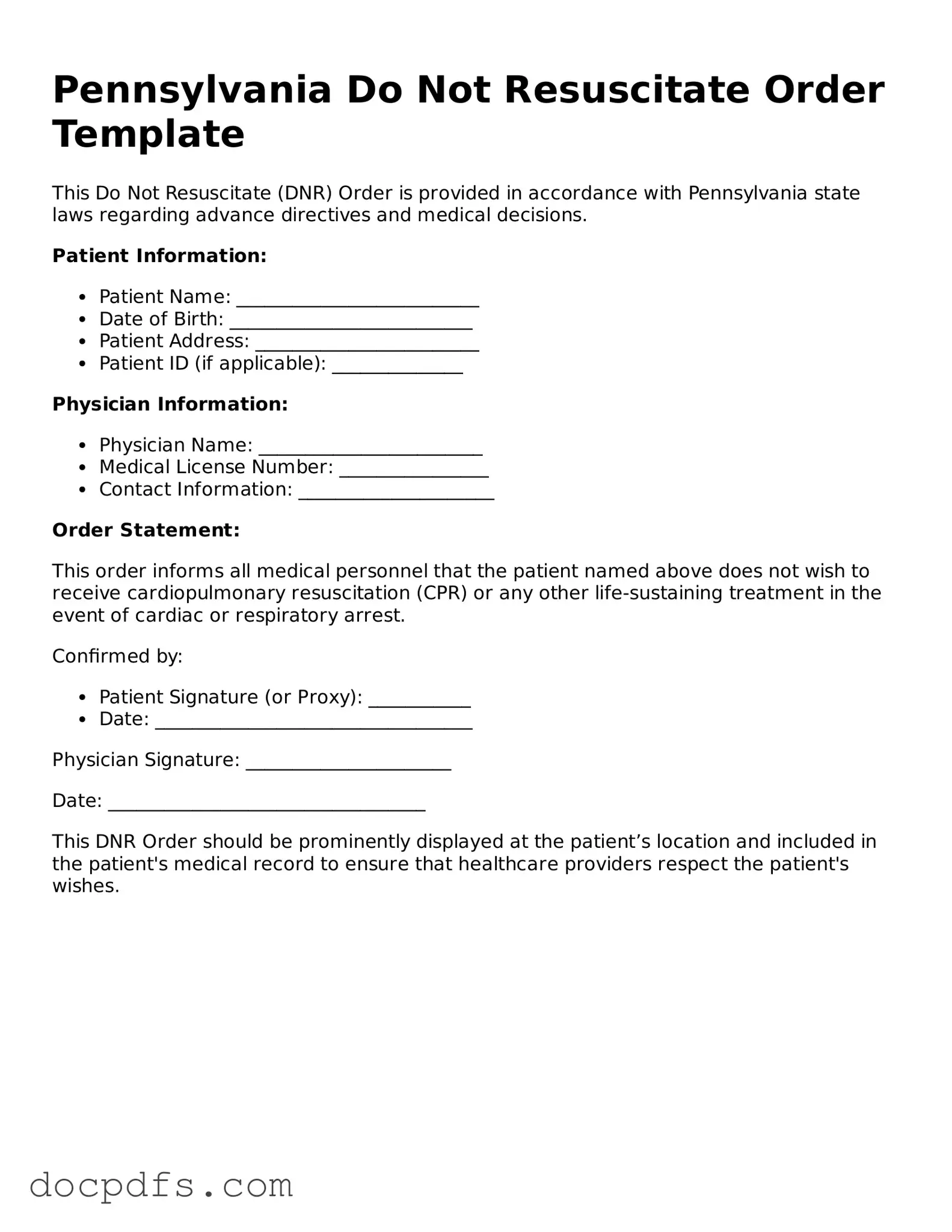What is a Pennsylvania Do Not Resuscitate (DNR) Order?
A Pennsylvania Do Not Resuscitate Order is a legal document that allows a person to refuse certain life-saving medical treatments, specifically cardiopulmonary resuscitation (CPR), in the event of a cardiac arrest or respiratory failure. This order is intended for individuals who wish to express their preference not to undergo resuscitation efforts in such situations.
Who can request a DNR Order in Pennsylvania?
Any adult who is capable of making their own healthcare decisions can request a DNR Order. Additionally, a parent or legal guardian can request a DNR for a minor. It’s important that the individual understands the implications of the order and is making the decision voluntarily.
How do I obtain a DNR Order in Pennsylvania?
To obtain a DNR Order, follow these steps:
-
Consult with your healthcare provider to discuss your wishes and the implications of a DNR Order.
-
Complete the Pennsylvania DNR Order form, which must be signed by both you and your healthcare provider.
-
Ensure that copies of the signed DNR Order are provided to your family, caregivers, and healthcare facilities where you receive treatment.
The DNR Order form typically requires the following information:
-
Your name and date of birth
-
Your healthcare provider’s name and contact information
-
Signatures of both you and your healthcare provider
-
Date the form was completed
Is a DNR Order valid in all healthcare settings?
Yes, a properly completed and signed DNR Order is valid in most healthcare settings in Pennsylvania, including hospitals, nursing homes, and emergency medical services. However, it’s crucial to ensure that the order is readily accessible to healthcare providers when needed.
Can I change or revoke my DNR Order?
Yes, you can change or revoke your DNR Order at any time. To do this, you should notify your healthcare provider and complete a new DNR Order form if necessary. It’s important to communicate your updated wishes to your family and caregivers as well.
What happens if there is no DNR Order in place?
If there is no DNR Order in place, healthcare providers are required to perform resuscitation efforts if you experience a cardiac arrest or respiratory failure. This may include CPR, intubation, and other life-saving measures, regardless of your wishes.
Yes, the DNR Order form must be signed by both you and your healthcare provider to be considered valid. Additionally, it should clearly indicate your wishes regarding resuscitation. Some healthcare facilities may have their own specific requirements, so it’s advisable to check with them as well.
How can I ensure my DNR Order is honored?
To ensure your DNR Order is honored, take the following steps:
-
Keep a copy of the DNR Order in a visible location, such as on your refrigerator or with your medical records.
-
Inform your family, caregivers, and healthcare providers about your DNR Order and its location.
-
Consider wearing a medical alert bracelet that indicates your DNR status.
